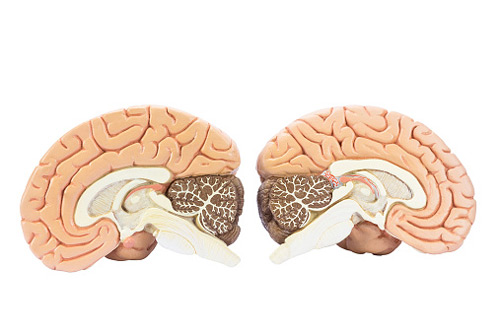 The hippocampus is a key part of the brain that is responsible for consolidating new memories and linking emotions to senses, among other useful purposes. As a result, it is a long-standing belief that some of the behavioral differences between men and women—like how women have better spatial skills—are linked to the relative size of the hippocampus, with women generally having more brain volume dedicated to this region.
The hippocampus is a key part of the brain that is responsible for consolidating new memories and linking emotions to senses, among other useful purposes. As a result, it is a long-standing belief that some of the behavioral differences between men and women—like how women have better spatial skills—are linked to the relative size of the hippocampus, with women generally having more brain volume dedicated to this region.
According to a meta-analysis from researchers at the Rosalind Franklin University of Medicine, however, this belief isn’t supported by physical data. The investigation of 76 published papers covering more than 6,000 subjects shows that these differences are not rooted in brain composition.
It is not regular sexism that explains the persistence of this belief. Some past studies do show that women have a larger hippocampal volume (HCV) than men. Additionally, several psychiatric disorders more common in women are known to exhibit hippocampal atrophy. Other studies have also noted that women seem to display stronger emotional gut-reactions to moral quandaries. This information, taken together, does seem to support the idea that differences in the “emotion center” of the brain play some significance.
The Rosalind Franklin meta-analysis contradicts this. The study took the data from 76 research papers and combined them while making adjustments for relative brain size. Even among individuals of the same gender, brain size is not entirely uniform. The raw HCV value is not representative unless corrected for individual differences in total brain volume, for instance. Once this was accomplished and age-related changes were controlled for, no reliable sex-specific differences were found.
More specifically, while the men in the studies often showed larger uncorrected HCV values, no significant gender difference was observed once these numbers were corrected for total brain size. One of the reasons the analyzed studies may have drawn different conclusions is the limitations of sample size. Small samples are more vulnerable to being unrepresentative of the larger population, as there is a greater chance of getting outliers by sheer coincidence. Meta-analysis is one way to combine smaller samples into larger pools to get more accurate results.
Similar investigations have also disputed other claims of gendered differences in the brain, such as the way the left and right hemispheres process language. While differences do exist between how men and women behave and perceive the world, it does not appear that brain mass is the reason.
The meta-analysis will be published in a winter edition of the journal NeuroImage.
Sources for Today’s Article:
“Male/female Brain Differences? Big Data Says Not so Much,” EurekAlert! web site, October 29, 2015; http://www.eurekalert.org/pub_releases/2015-10/rfuo-mbd102915.php.
Tan, A., et al., “The Human Hippocampus Is Not Sexually-dimorphic: Meta-analysis of Structural MRI Volumes,” NeuroImage 2016; 124: 350–66, doi:10.1016/j.neuroimage.2015.08.050.
Wood, J., “Gender Differences in Moral Reasoning Rooted in Emotion,” PsychCentral.com, April 5, 2015; http://psychcentral.com/news/2015/04/05/gender-differences-in-moral-reasoning-rooted-in-emotion/83145.html.
